Mauritius’ Most Iconic Nudibranchs
Mauritius is more than just turquoise lagoons and white-sand beaches — it's also home to an incredible diversity of nudibranchs, the flamboyant sea slugs that fascinate underwater photographers and marine life lovers alike.
In this article, we explore the most emblematic nudibranch species found around Mauritius — some easy to spot, others more secretive, and a few exclusive ones that have only recently made their debut on our reefs.
The Phyllidia & Phyllidiella Family
- Phyllidia marindica
Black with blue and yellow markings.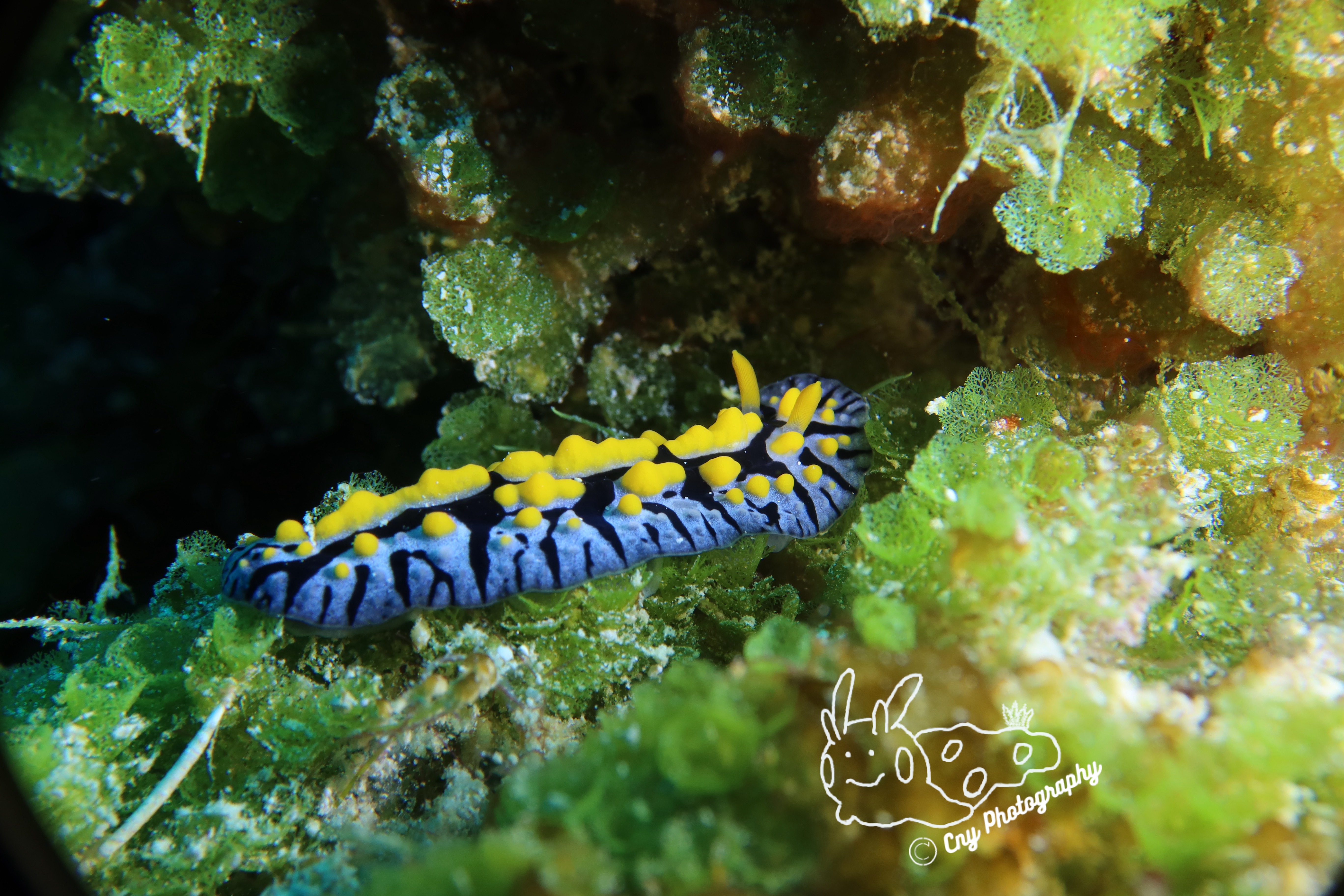
Phyllidia marindica is a bold and easily recognizable nudibranch, thanks to its black body covered in raised blue and yellow ridges and tubercles. Like other members of the Phyllidia family, it doesn’t have external gills and uses its entire body surface to breathe. It feeds on sponges and produces chemical compounds that make it distasteful to predators — a fact it advertises through its striking warning colors. Often active during the day, it’s one of the more visible species on Mauritian reefs. - Phyllidia ocellata
Eye-like spots.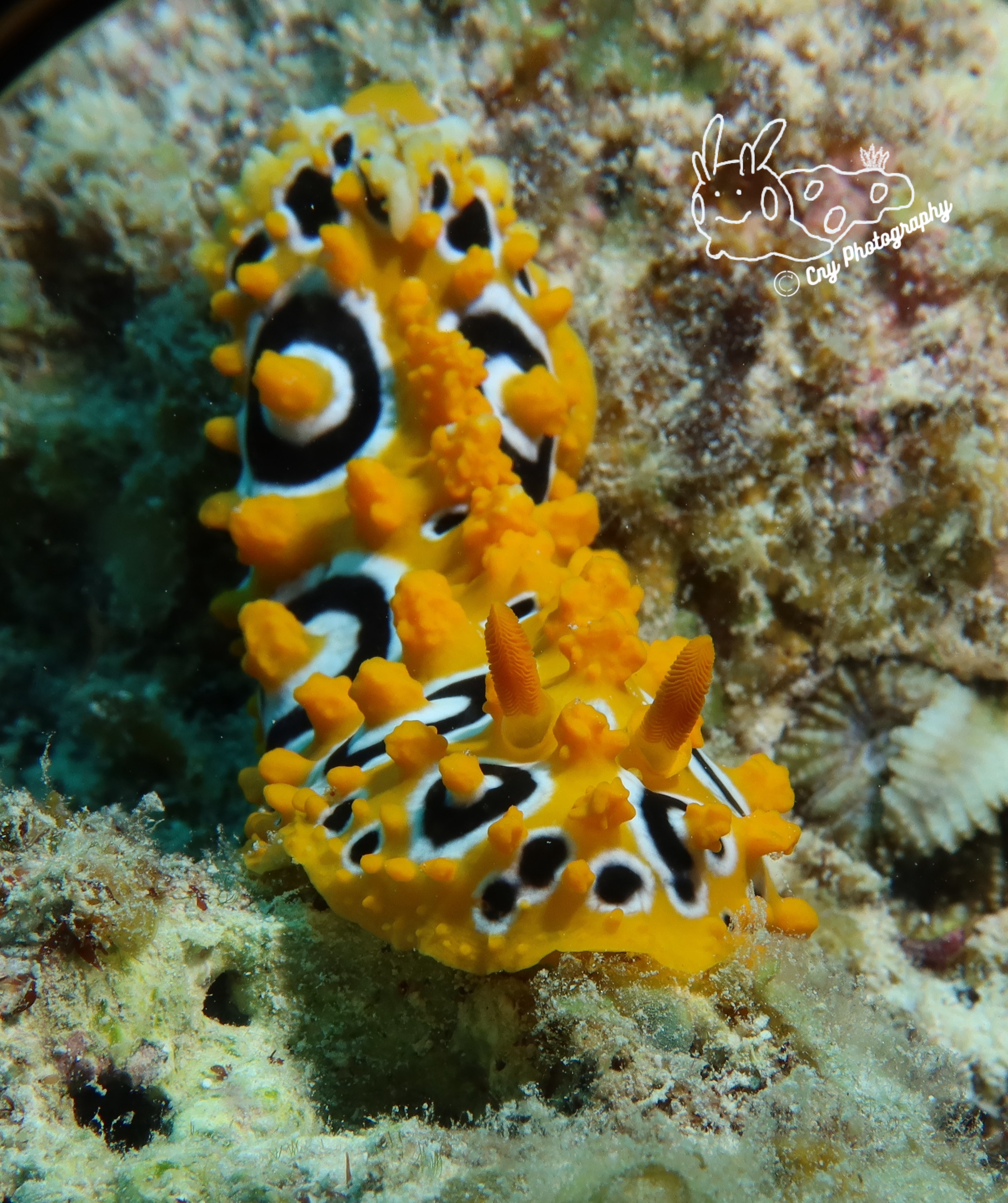
Phyllidia ocellata is one of the most distinctive nudibranchs in the Phyllidia family, instantly recognizable by its bright orange or yellow body adorned with eye-like black spots — the "ocellata" name refers to these "eye" patterns. These bold markings serve as a warning to predators: like many phyllidiids, it secretes toxic chemicals when threatened. Common on tropical reefs, including those in Mauritius, it’s often spotted crawling over sponges, its primary food source. - Phyllidia varicosa
Blue-grey with yellow lines and tubercles.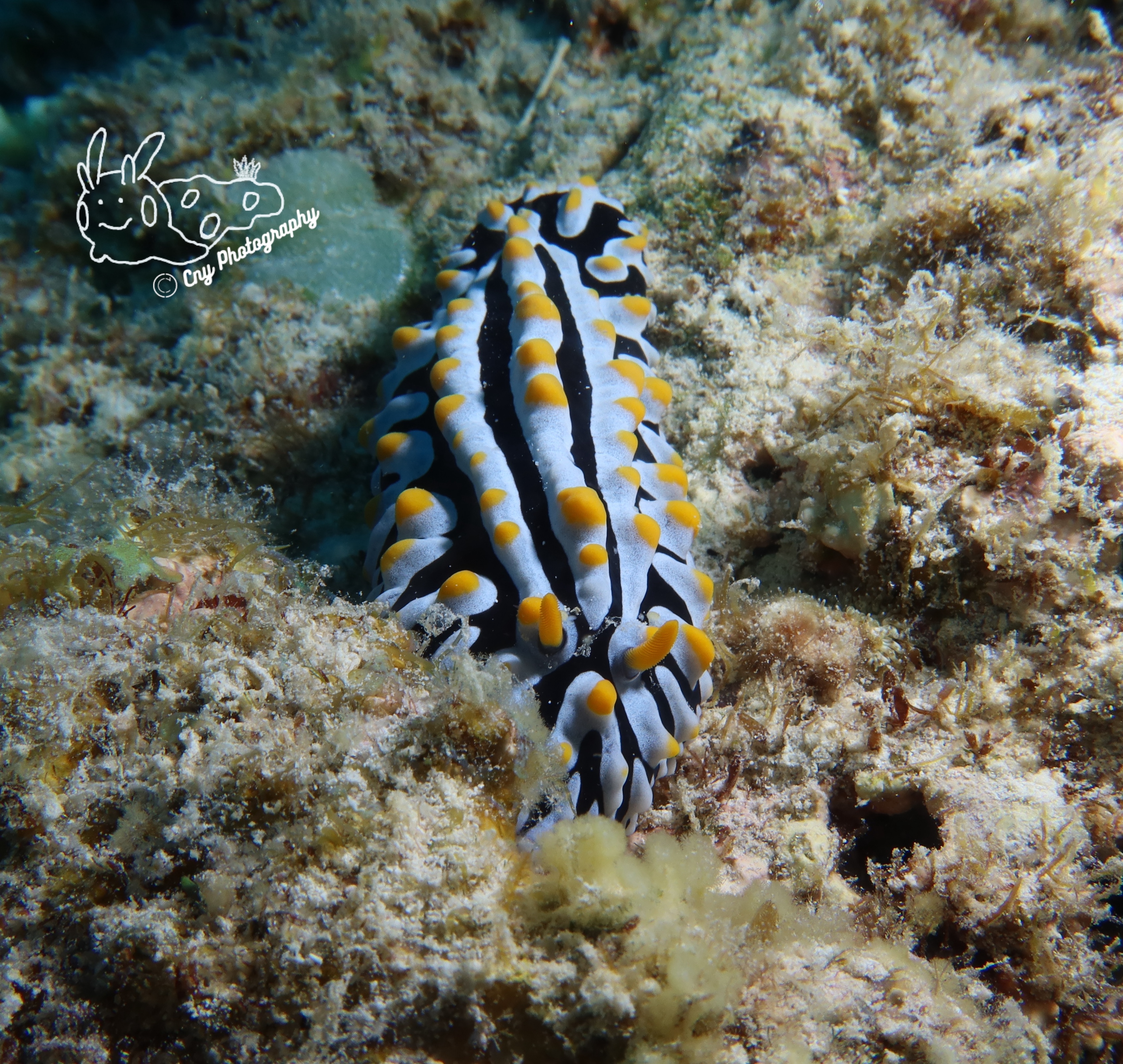
Phyllidia varicosa is one of the largest and most commonly seen phyllidiid nudibranchs on Indo-Pacific reefs, including Mauritius. It’s instantly recognizable by its bluish-grey body, raised yellow ridges, and dark longitudinal lines that run along its back. Like its relatives, it feeds on sponges and uses chemical defenses to deter predators. - Phyllidiella rosans
Vivid pink and black.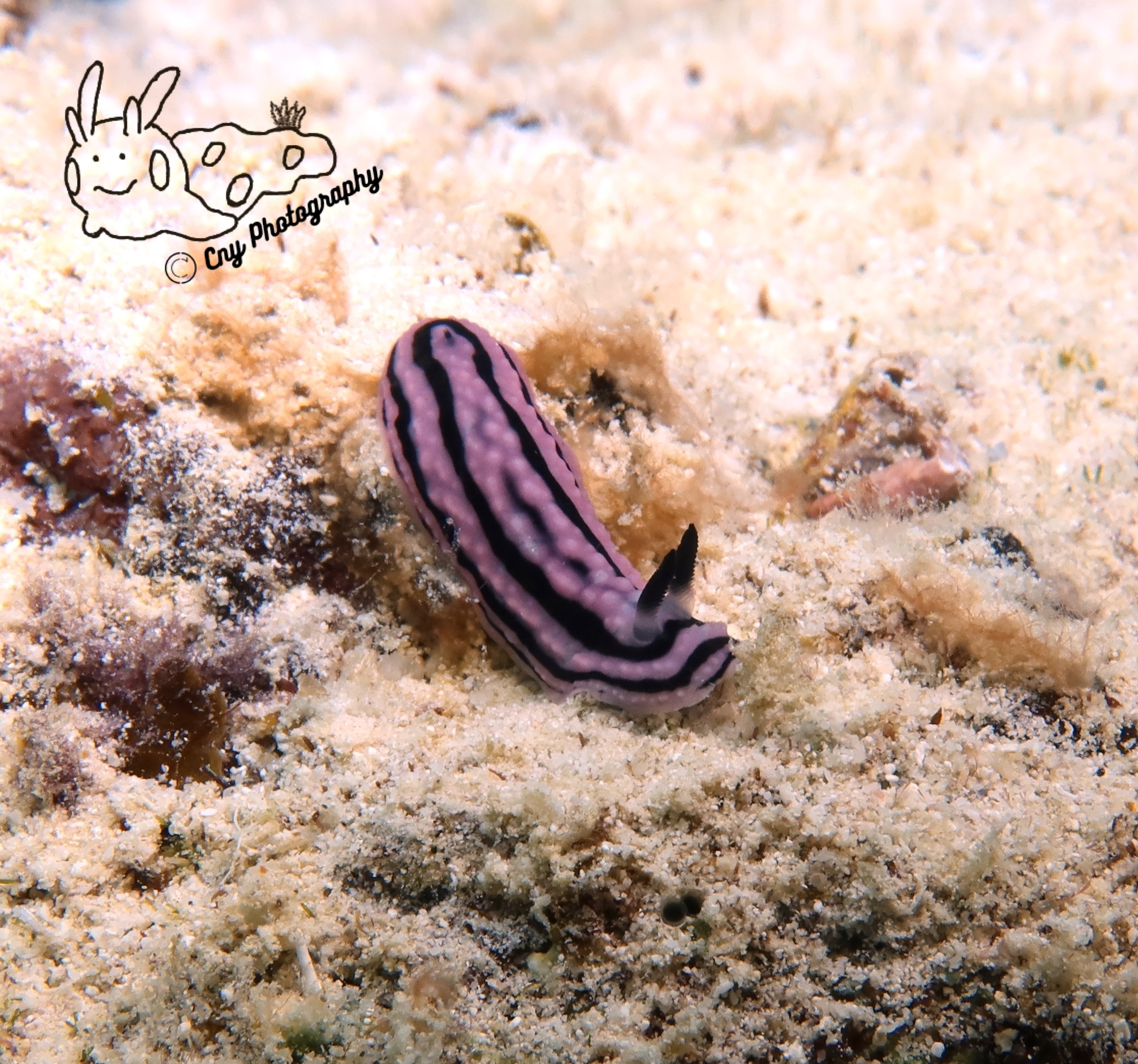
Phyllidiella rosans stands out with its striking pink ridges outlined against a black background — a vibrant contrast that warns predators of its toxic defenses. This nudibranch, like others in its family, feeds on sponges and lacks visible gills. It’s often found crawling slowly across the reef during the day, making it a relatively easy subject to spot and photograph. - Phyllidiella zeylanica
Subtler but elegant.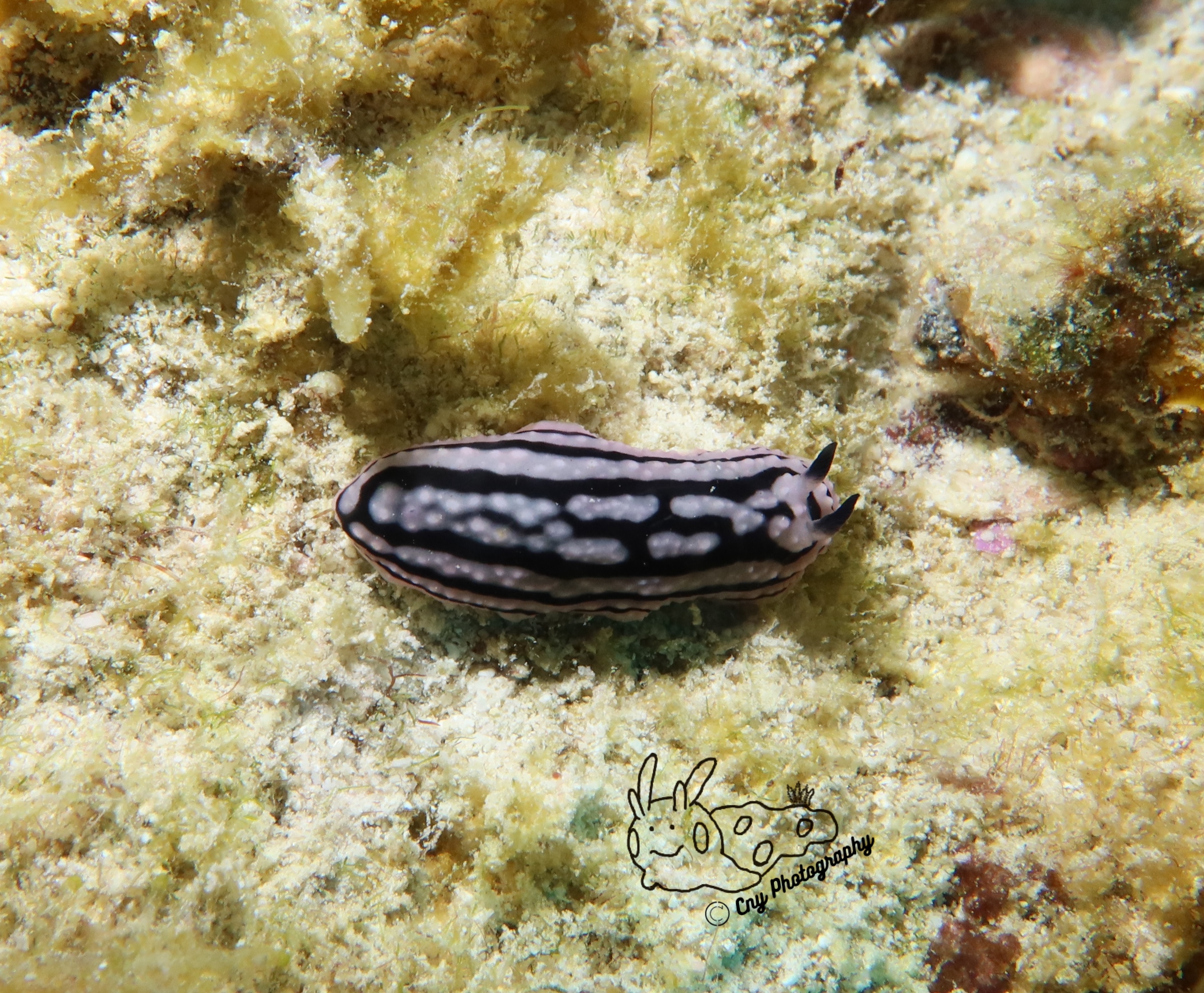
Phyllidiella zeylanica may be more subtle than its colorful relatives, but its elegance lies in its soft pink to grey ridges and dark, branching patterns across the dorsum. Common on Indo-Pacific reefs, including Mauritius, this species feeds on specific sponge species and uses chemical defenses to deter predators.













